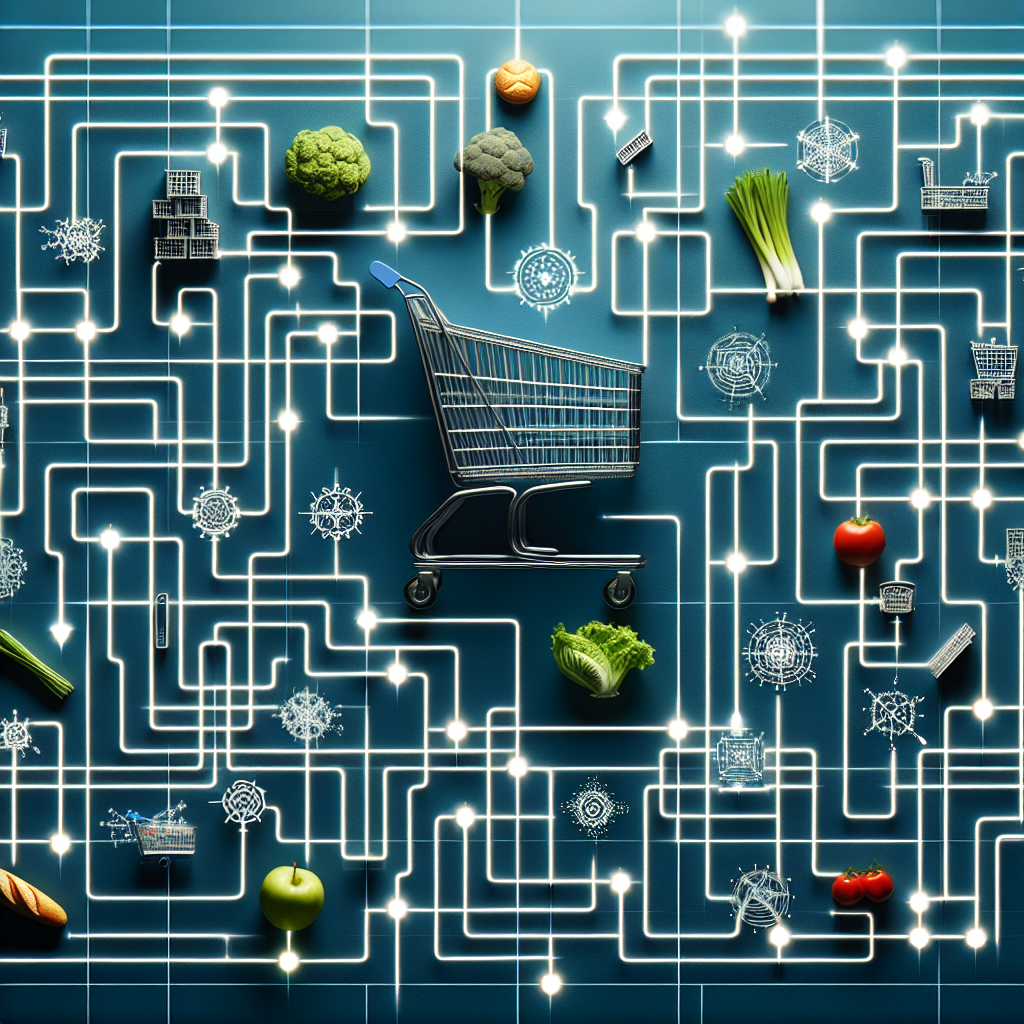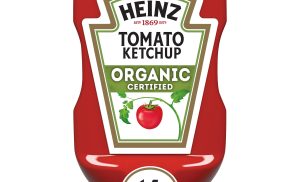Navigating the Complexities of Trader Joe’s Supply Chain
Are you curious about the inner workings of Trader Joe’s supply chain and how they manage to consistently provide customers with their unique and affordable products? In this article, we will take a closer look at the complexities and intricacies that Trader Joe’s faces in managing its supply chain. From sourcing products from around the world to maintaining close relationships with suppliers, we will explore the challenges and triumphs that contribute to the success of this beloved grocery chain. So get ready to navigate the fascinating world of Trader Joe’s supply chain!

Trader Joe’s Supply Chain Overview
Welcome to Trader Joe’s Supply Chain Overview! In this article, we will take a comprehensive look at how Trader Joe’s manages its supply chain to provide customers with a unique shopping experience. From procurement to store operations, we will explore the strategies and processes that make Trader Joe’s stand out in the highly competitive grocery industry. So, let’s dive in and explore the elements that contribute to the success of Trader Joe’s supply chain.
Company Background
Trader Joe’s, founded in 1958, is a well-known and beloved grocery store chain that has gained a loyal customer base across the United States. Known for its unique store layout, exceptional customer service, and high-quality products, Trader Joe’s has become a go-to destination for many shoppers. To achieve this level of excellence, Trader Joe’s has developed an innovative and efficient supply chain management system.
Unique Approach to Supply Chain Management
One of the key factors that set Trader Joe’s apart from its competitors is its unique approach to supply chain management. Rather than relying on a wide range of suppliers, Trader Joe’s focuses on building long-term relationships with a select group of vendors. This allows them to maintain a high level of quality control and ensures that only the best products make it to their shelves. Furthermore, Trader Joe’s emphasizes innovation and constantly seeks to introduce new and exciting products to its customers.
Supply Chain Network
Trader Joe’s operates with a highly efficient and well-established supply chain network that facilitates the delivery of products to its stores across the country. The network consists of various elements, including procurement, distribution and transportation, inventory management, store operations, supply chain collaboration, product development and innovation, sustainability initiatives, risk management, and continuous improvement.
Procurement Process
To ensure the highest quality products on their shelves, Trader Joe’s employs a meticulous procurement process. This involves sourcing strategies, vendor selection and relationship management, and quality assurance.
Sourcing Strategies
Trader Joe’s focuses on sourcing unique and high-quality products from around the world. They carefully select suppliers who share their commitment to quality and innovation. By offering exclusive products, Trader Joe’s creates a sense of excitement and differentiation, making customers feel like they are discovering something special.
Vendor Selection and Relationship Management
Trader Joe’s believes in building strong, long-term relationships with its vendors. They prioritize transparent and open communication, working closely with their suppliers to ensure a steady supply of products. This collaborative approach allows for effective problem-solving and the development of mutually beneficial partnerships.
Quality Assurance
Maintaining the highest standards of quality is paramount for Trader Joe’s. Their rigorous quality assurance processes include thorough inspections, testing, and compliance with industry regulations. This ensures that all products meet Trader Joe’s strict quality standards and provide customers with the best possible experience.

Distribution and Transportation
Trader Joe’s efficient distribution and transportation system plays a crucial role in ensuring that products reach their stores in a timely and cost-effective manner.
Regional Distribution Centers
Trader Joe’s operates a network of regional distribution centers strategically located across the country. These centers serve as hubs for receiving, storing, and distributing products. By utilizing regional distribution centers, Trader Joe’s can optimize the delivery process and minimize transportation costs.
Inventory Management
Effective inventory management is a cornerstone of Trader Joe’s supply chain. By closely monitoring stock levels and demand, Trader Joe’s ensures that each store has the right quantity of products at all times. This minimizes the risk of overstocking or understocking, allowing for smoother operations and better customer satisfaction.
Transportation Strategies
Trader Joe’s transportation strategies focus on efficiency and sustainability. They work closely with logistics partners to optimize routes, minimize fuel consumption, and reduce carbon emissions. This commitment to environmentally friendly transportation helps Trader Joe’s minimize its ecological footprint while delivering products to customers.
Inventory Management
Trader Joe’s strategic approach to inventory management ensures that customers find a wide selection of products on the shelves at all times.
Stock Keeping Units (SKUs)
Trader Joe’s manages a diverse range of products, each assigned a unique Stock Keeping Unit (SKU). SKUs enable efficient tracking and categorization of inventory, making it easier for the company to monitor stock levels and identify trends in customer preferences.
Demand Forecasting
Accurate demand forecasting plays a critical role in Trader Joe’s inventory management. By analyzing historical sales data, tracking market trends, and considering external factors, such as seasonality and promotions, Trader Joe’s can anticipate customer demand and adjust their inventory levels accordingly. This ensures that shelves are always stocked with the products customers want.
Shelf Space Optimization
Trader Joe’s dedicates a significant amount of effort to optimizing shelf space in their stores. They carefully analyze product sales performance and customer behavior to determine the most effective placement and assortment of items. By maximizing the use of available shelf space, Trader Joe’s ensures that customers have access to a wide range of products while maintaining an organized and visually appealing store layout.

Store Operations
Trader Joe’s store operations are designed to create an enjoyable and efficient shopping experience for customers.
Store Planning and Design
Trader Joe’s store planning and design take into consideration factors such as customer flow, product visibility, and ease of navigation. By designing stores with these considerations in mind, Trader Joe’s enhances the overall shopping experience, making it easy for customers to find what they need and discover new products.
Order Fulfillment
Efficient order fulfillment is crucial to maintaining a well-stocked inventory. Trader Joe’s employs efficient processes for receiving, unpacking, and organizing products in their stores. By ensuring speedy and accurate order fulfillment, Trader Joe’s minimizes the risk of items being out of stock and reduces customer wait times.
Inventory Replenishment
To ensure shelves are always stocked, Trader Joe’s employs continuous inventory replenishment. This involves monitoring stock levels in real-time and promptly restocking products when necessary. By closely monitoring inventory and replenishing it in a timely manner, Trader Joe’s minimizes the risk of stockouts and ensures customers always find what they need.
Supply Chain Collaboration
Trader Joe’s recognizes the importance of collaboration within its supply chain and actively works with suppliers and retail stores to optimize operations.
Collaboration with Suppliers
Trader Joe’s maintains strong collaborative relationships with its suppliers. This open communication allows for effective sharing of information, such as production capacity, potential disruptions, and market trends. By collaborating closely with suppliers, Trader Joe’s can align their strategies and ensure a smooth flow of goods from manufacturer to shelf.
Collaboration with Retail Stores
Trader Joe’s fosters collaboration and information sharing between its headquarters and retail stores. By maintaining effective channels of communication, Trader Joe’s can stay informed about store-level operations, sales performance, and customer feedback. This enables them to respond quickly to customer demands and make data-driven decisions to enhance the overall customer experience.
Information Sharing and Technology
Trader Joe’s leverages technology to facilitate information sharing and collaboration within its supply chain. Through the use of advanced systems, such as inventory management software and data analytics tools, Trader Joe’s can gather and analyze data to make informed decisions. This enables them to optimize their supply chain operations, identify areas for improvement, and adapt to changing market conditions.

Product Development and Innovation
Trader Joe’s commitment to product development and innovation sets them apart in the grocery industry.
New Product Introductions
Trader Joe’s constantly introduces new and exciting products to keep customers engaged and satisfied. They invest in market research and consumer trends to identify gaps in their product offerings and develop innovative solutions that meet customer needs. By regularly introducing new products, Trader Joe’s keeps their stores fresh and exciting, encouraging customers to explore and discover new favorites.
Packaging Innovations
Trader Joe’s pays attention not only to the quality of the products they offer but also to the packaging. They strive to create packaging that is not only aesthetically pleasing but also functional and environmentally friendly. By exploring innovative packaging options, Trader Joe’s aims to reduce waste and minimize their impact on the environment.
Private Label Strategy
Trader Joe’s has a strong private label strategy, offering a wide range of high-quality products under their own brand. By developing their private label products, Trader Joe’s can maintain control over quality and offer unique items that cannot be found elsewhere. This strategy allows them to differentiate themselves from their competitors and provide customers with exclusive products that meet their high standards.
Sustainability Initiatives
Trader Joe’s is committed to sustainability and actively implements initiatives to reduce its environmental impact.
Responsible Sourcing
Trader Joe’s places a strong emphasis on responsible sourcing practices. By working closely with suppliers who prioritize ethical and sustainable production, Trader Joe’s ensures that their products are sourced in a responsible manner. This includes considerations such as fair trade, organic production, and animal welfare.
Waste Reduction and Recycling
Trader Joe’s prioritizes waste reduction and recycling. They implement measures to minimize packaging waste and actively seek out opportunities for recycling and composting. By partnering with waste management organizations and investing in sustainable packaging solutions, Trader Joe’s aims to minimize its environmental footprint and contribute to a healthier planet.
Energy Efficiency
Trader Joe’s is committed to energy efficiency in its stores and distribution centers. They invest in energy-saving technologies, such as LED lighting, efficient cooling systems, and renewable energy sources. These initiatives not only reduce energy consumption but also help Trader Joe’s lower operational costs and contribute to a greener future.

Risk Management
Trader Joe’s understands the importance of proactively managing risks and ensuring the safety and compliance of its products.
Supply Chain Disruptions
Trader Joe’s actively monitors and prepares for potential supply chain disruptions, such as weather events or transportation delays. They maintain contingency plans to minimize the impact of disruptions and work closely with suppliers to ensure timely communication and problem-solving.
Quality Control
Maintaining strict quality control is a top priority for Trader Joe’s. They implement robust quality control processes, including regular product testing and inspections, to ensure that only the highest quality products make it to their stores. This commitment to quality creates trust and loyalty among customers.
Food Safety and Compliance
Trader Joe’s prioritizes food safety and compliance with industry regulations. They adhere to stringent safety protocols, implement rigorous food handling practices, and collaborate with regulatory authorities to ensure compliance. By maintaining the highest standards of food safety, Trader Joe’s provides customers with confidence in the products they purchase.
Continuous Improvement and Adaptation
Trader Joe’s understands the need for continuous improvement and the ability to adapt to changing market conditions.
Process Optimization
Trader Joe’s is committed to continuously improving its processes to enhance efficiency and reduce costs. They regularly evaluate their supply chain operations, identify bottlenecks and inefficiencies, and implement solutions to optimize processes. By striving for process excellence, Trader Joe’s ensures a seamless supply chain from procurement to store operations.
Technology Adoption
Trader Joe’s embraces the use of technology to drive innovation and improve operations. They leverage advanced software solutions for inventory management, demand forecasting, and data analytics to gain insights and make data-driven decisions. By adopting technology, Trader Joe’s stays ahead of the curve and maintains a competitive edge.
Learning from Challenges
Trader Joe’s sees challenges as opportunities for growth and improvement. They actively learn from past experiences and apply these learnings to their future operations. By embracing a culture of continuous learning and adaptation, Trader Joe’s remains agile and resilient in the face of industry changes.
In conclusion, Trader Joe’s effective supply chain management is the backbone of its success in providing customers with a unique and delightful shopping experience. From their strategic procurement processes to their commitment to collaboration, innovation, sustainability, and risk management, Trader Joe’s continues to navigate the complexities of the grocery industry, triumphing over challenges and delivering excellence every day.










